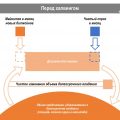The advent of Bitcoin, the first cryptocurrency, changed the world's understanding of howdigital money can work.Many have come up with their own versions of virtual coins and tokens with different purposes and uses. Those who remained loyal to the brainchild of Satoshi Nakamoto found it far from ideal and in need of changes.
This is how the so-called Bitcoin improvement proposals arose -BIP (Bitcoin Improvement Proposal)– a uniform standard for those who offermake changes to the protocol, process, or source information for the Bitcoin community. The BIP may contain proposals for soft or hard forks, changes at the peer-to-peer network level, or new models of backup seed phrases. However, simple changes such as code execution or interface modifications may not require a BIP.
Amir Taaki
First Proposal to Improve Bitcoinintroduced by an early crypto developer named Amir Taaki, known as the creator of the first alternative implementation of the leading cryptocurrency protocol - Libbitcoin. Taaki is convinced that if BIP is used correctly, Bitcoin will become more structured and accountable, which will benefit the entire ecosystem of the first cryptocurrency.
Taaki presented his BIP, known as BIP0001, August 19, 2011. The document outlined the standard for the BIP process. Taaki built it based on a process used to improve the well-known Python programming language and described in a proposal to improve Python(Python Enhancement Proposal)PEP 0.
Bip
All BIPs are first drawn up by one orby several authors in draft form and then presented to the public. Typically, even before the draft is drafted, the BIP is discussed in chats, Bitcoin developer mailing lists, etc. Community feedback plays an important role in making changes to the draft proposal. Drafts can be accepted, deferred, rejected, or revoked. If the BIP is about changes affecting the Bitcoin protocol, then a reference implementation of the code is required. The BIP is considered final only after community consensus has been reached. The developers then implement the accepted BIP code, and users can download and run the code. However, the BIP is not binding. While developers decide which code to implement, users also decide what software and what protocol they want to run on their computer. Thus, BIP-based claims do not stand a chance in court.
Three types of BIP
1. Standard BIP
Proposals that aim to change the Bitcoin protocol are called standard BIPs(Standards Track BIP)... This includes changes to these blocks or tothe process of confirming transactions. Also this type covers attempts to change interoperable functions between two BIPs. For such changes to work, consensus is required. An example is BIP 91.
2. Informational BIPs
This type of BIP focuses on general guidelines, design issues, and other information that does not attract the attention of the Bitcoin community as a whole. An example is BIP 32.
3. Procedural BIPs
This type includes proposals seekingimprove the basic processes that govern the Bitcoin ecosystem. These BIPs are similar to the standard BIPs in that they require consensus voting in order to implement significant changes. An example is BIP 2.
Examples of the most valuable BIPs
1. SegWit (Segregated Witness)
BIP 141 was nominated by two Bitcoin Core developers in 2015. It has been proposed to improve the scalability of Bitcoin through bandwidth-increasing solutions.
The update was implemented using a soft fork that required at least 95% of the miners' votes over a fixed period of 14 days. The SegWit solution allowed more transactions to be included in one block.
2. BIP 91
James Hilliard pushed this soft fork proposal in 2017 to activate the current SegWit offering with less than 95% compute power.
3. BIP 148 (UASF)
In 2017Someone under the alias Shaolin Fry conceived BIP 148 as a user-activated solution to a SegWit soft fork to scale Bitcoin's throughput. BIP 148 requirement is for its software to update 50 +% of full nodes. At the moment, 50% of the consensus vote has not been reached.
4. SegWit2X
This BIP combines two solutions forscaling - SegWit and increasing the block size up to 2 MB. It was suggested first to implement SegWit. Three months after SegWit, the block size should increase to 2 MB. Despite strong initial community support, due to technical issues, the proposal was considered an attack on the network, which led to its cancellation.
4. Lightning Network
Joseph Poon and Thaddeus Dryja conceived this BIP in2015 to improve Bitcoin scalability by allowing instant payments outside the blockchain. Micropayments will be carried out, allowing money to be transferred without the risk of theft by the counterparty. They use multi-signature wallets capable of conducting an unlimited number of transactions without storing data on the Bitcoin blockchain. The only data recorded on the blockchain is the amount of BTC available on the respective wallet and the percentage contribution of each participant. The Lightning Network also allows cross-chain payments and smart contracts.
In conclusion
Bitcoin Improvement Suggestions - Classica way to present decentralization to the general public, giving them the freedom to propose improvements in a decentralized financial project for the benefit of the entire community. The consensus required for this is an example of how the Bitcoin community works when new ideas come up. With a brilliant proposal, anyone can earn the right to be heard, get support, and bring their ideas to life.
</p>




